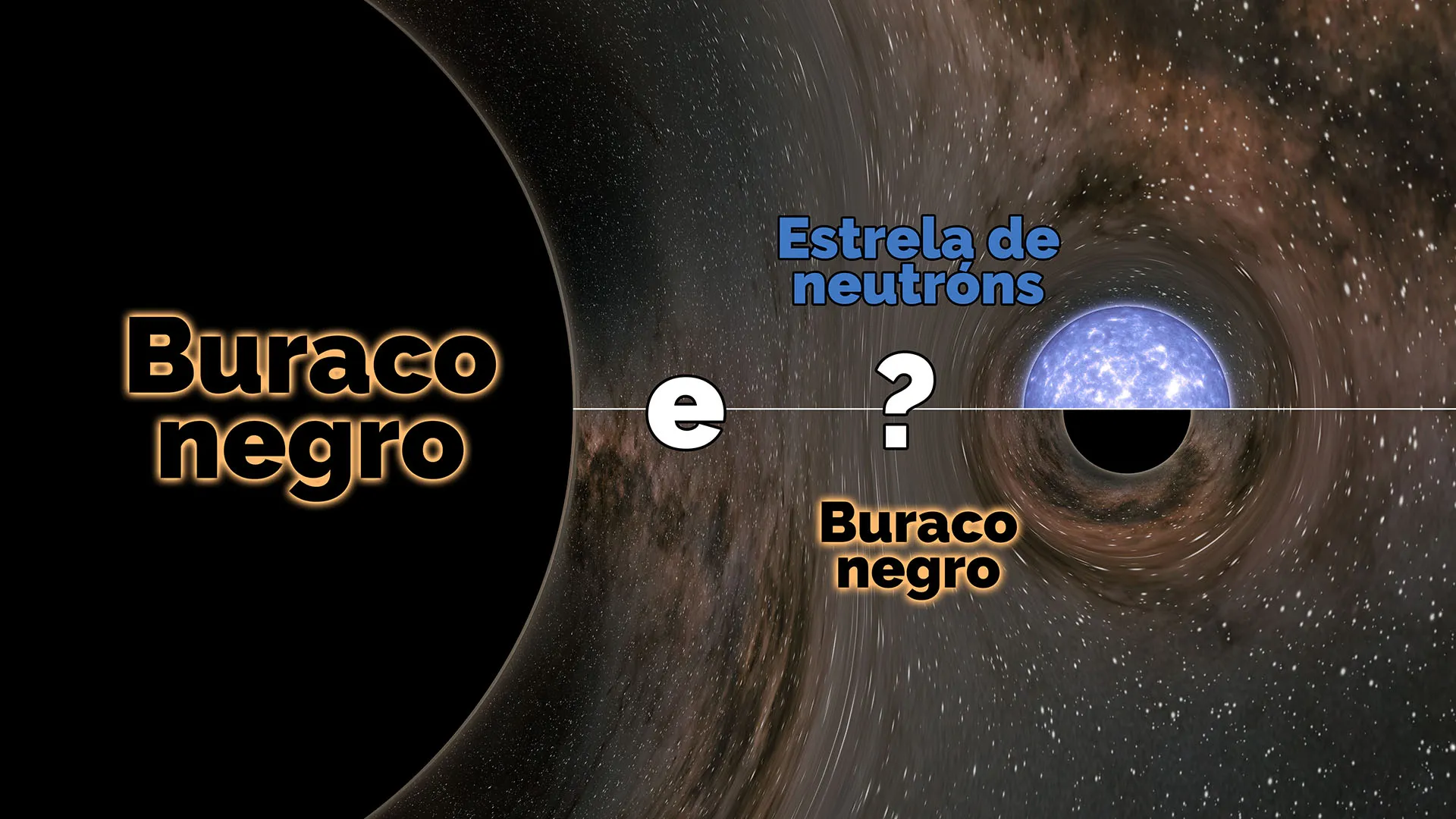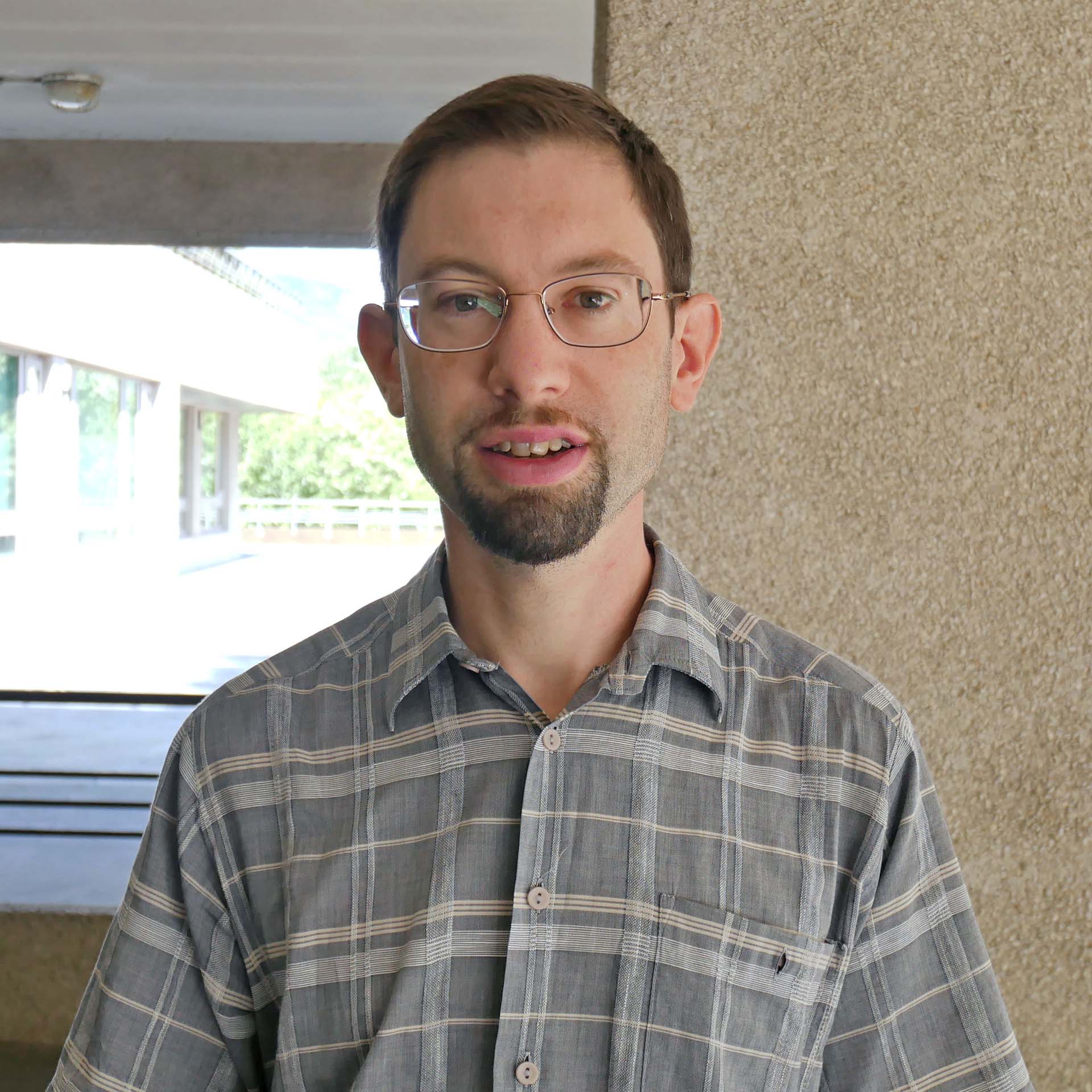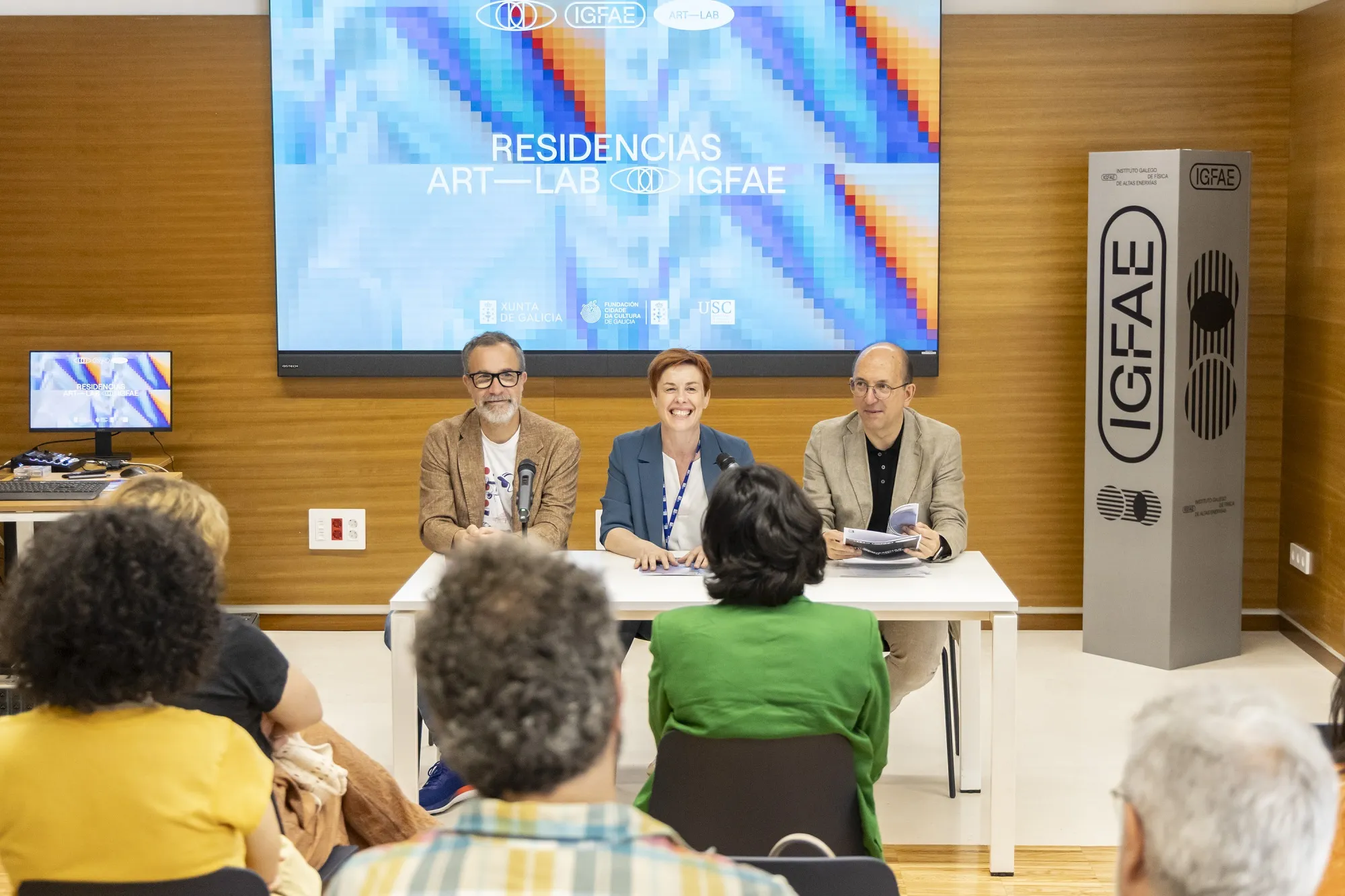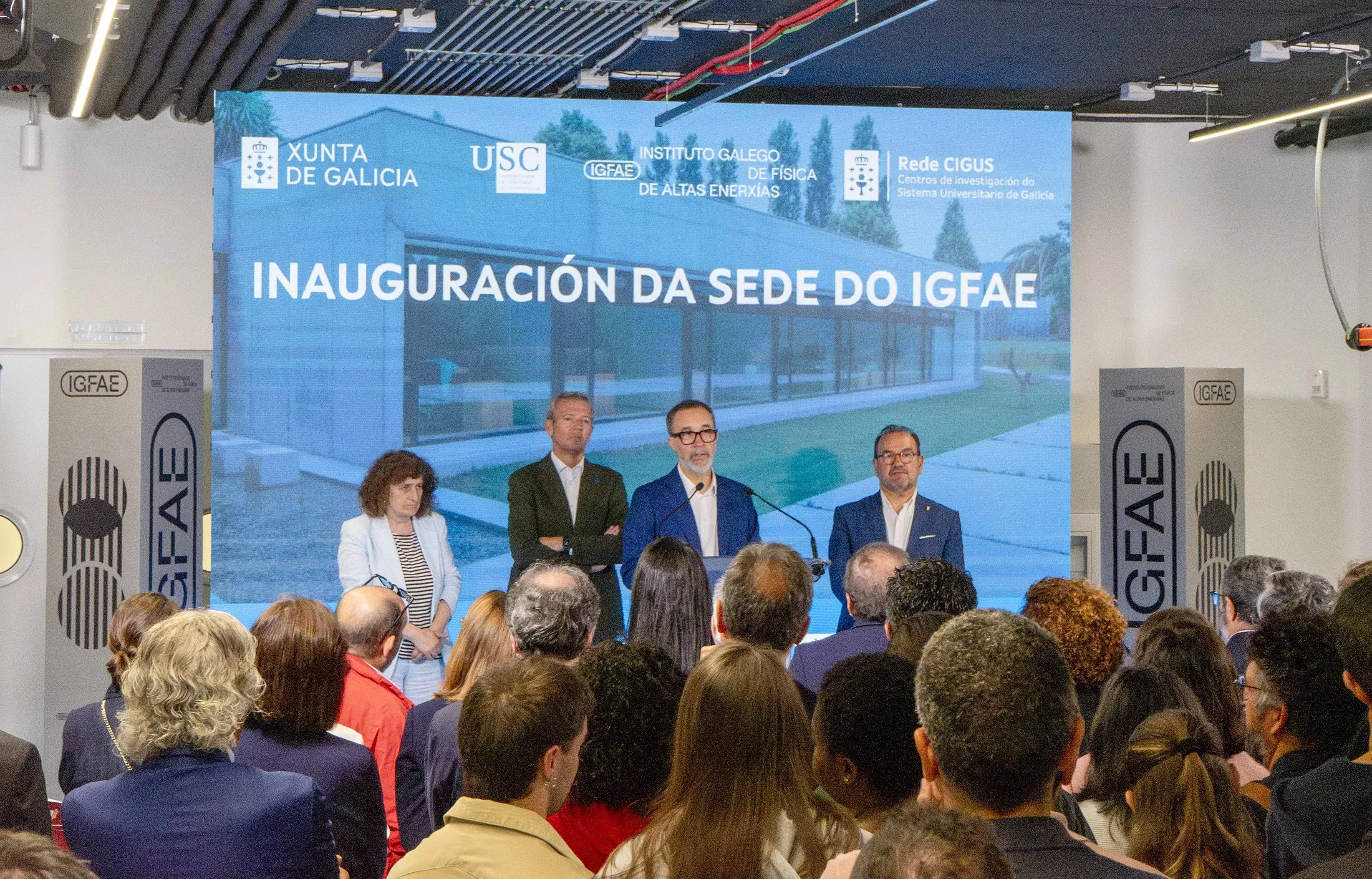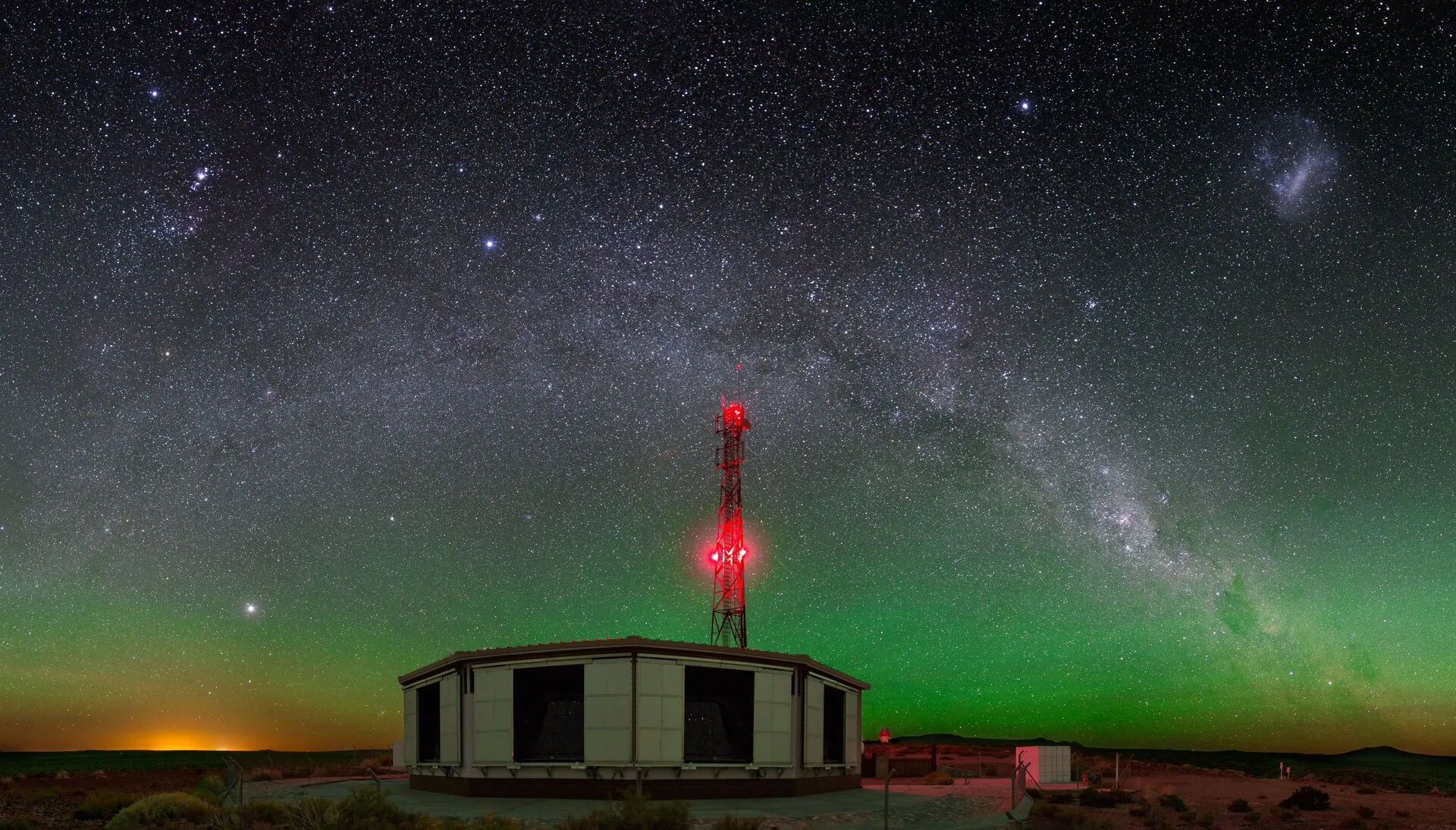Virgo e LIGO, no que participa o Instituto Galego de Física de Altas Enerxías (IGFAE), anunciaron o descubrimento dun obxecto compacto de aproximadamente 2,6 masas solares, situándoo nun intervalo entre a estrela de neutróns máis masiva e o buraco negro máis lixeiro xamais visto. Fai uns 800 millóns de anos, este obxecto fusionouse cun buraco negro de 23 masas solares e, ao facelo, emitiu unha intensa onda gravitacional. Dado que a observación illada desta onda, que se detectou na Terra en agosto de 2019, non nos permite distinguir se o obxecto compacto é un buraco negro ou unha estrela de neutróns, a súa natureza exacta segue sendo un misterio.
Durante moito tempo, a comunidade astronómica estivo desconcertada pola falta de observacións de obxectos compactos con masas no intervalo desde 2,5 ata 5 masas solares. Esta misteriosa zona gris coñécese como o “oco na distribución de masas”: un intervalo de masas aparentemente demasiado pequenas para un buraco negro e demasiado grandes para unha estrela de neutróns. Tanto as estrelas de neutróns como os buracos negros fórmanse cando estrelas moi masivas esgotan o seu combustible nuclear e explotan como supernovas. O que queda despois da explosión depende da cantidade que permanece do núcleo da estrela. Os núcleos menos masivos tenden a formar estrelas de neutróns, mentres que os máis masivos colapsan en buracos negros. Entender se existe un oco na distribución de masas no intervalo mencionado e por que, foi un enigma durante moito tempo para os científicos.
Agora, as colaboracións científicas que operan o detector Advanced Virgo no Observatorio Gravitacional Europeo (EGO, polas súas siglas en inglés), preto de Pisa en Italia, e os dous detectores Advanced LIGO, nos Estados Unidos, anunciaron o descubrimento dun obxecto de ao redor de 2,6 masas solares, é dicir, dentro do chamado “oco na distribución de masas”, cuestionando así a súa propia existencia. A natureza do obxecto en si mesmo segue sendo un misterio, xa que esta observación de ondas gravitacionais por si soa non nos permite distinguir se se trata dun buraco negro ou unha estrela de neutróns. Fai uns 800 millóns de anos, o obxecto fusionouse cun buraco negro de 23 masas solares e, ao facelo, xerou un buraco negro final dunhas 25 veces a masa do Sol. A fusión emitiu unha intensa onda gravitacional que os tres instrumentos da rede detectaron o 14 de agosto de 2019, e por tanto etiquetouse como GW190814. O descubrimento ven de publicarse en The Astrophysical Journal Letters.
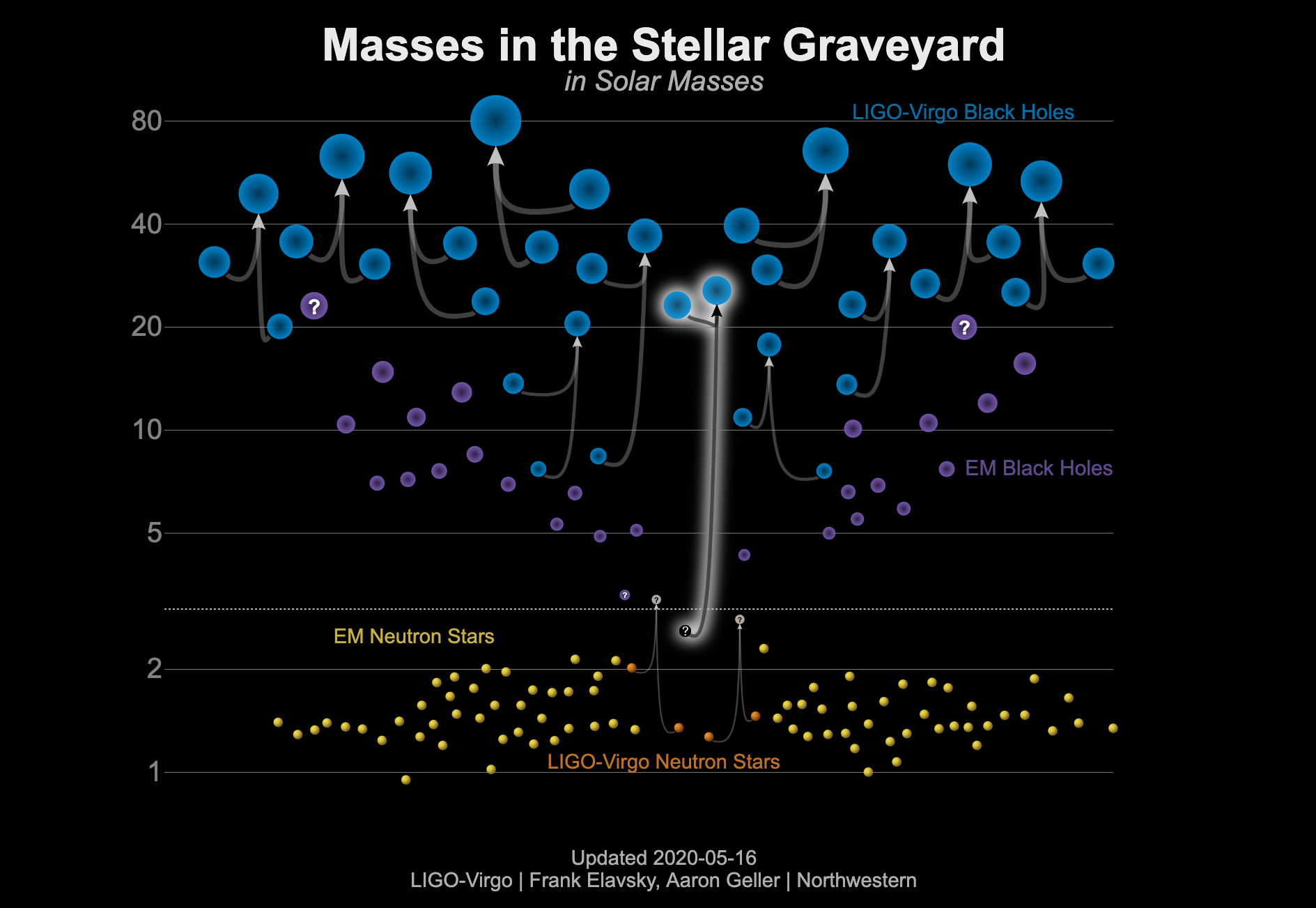
Lenda para táboa de masas: Este gráfico mostra as masas para os buracos negros detectados a través de observacións electromagnéticas (morado), os buracos negros medidos mediante observacións de ondas gravitacionais (azul), as estrelas de neutróns medidas con observacións electromagnéticas (amarelo) e as estrelas de neutróns detectadas a través de ondas gravitacionais (laranxa). GW190814 está resalta no centro do gráfico como a fusión dun buraco negro e un obxecto misterioso ao redor de 2,6 veces a masa do Sol. Crédito: LIGO-Virgo/ Frank Elavsky & Aaron Geller (Northwestern).
Outra peculiaridade deste evento é que a fusión mostra a proporción máis inusual entre masas dun sistema binario rexistrado ata a data. O obxecto maior é aproximadamente 9 veces máis masivo que o obxecto menor.
O sinal asociado a unha fusión tan inusual foi claramente detectada polos tres instrumentos da rede LIGO-Virgo, cunha relación global sinal-ruído de 25. Grazas principalmente ao atraso entre os tempos de chegada do sinal nos detectores, é dicir, os dous Advanced LIGO nos EE. UU. e Advanced Virgo en Italia, a rede de 3 detectores foi capaz de localizar a posición no ceo da fonte que xerou a onda nunha rexión duns 19 graos cadrados.
Cando LIGO e Virgo detectaron esta fusión, inmediatamente enviaron unha alerta á comunidade astronómica. Moitos telescopios terrestres e espaciais fixeron un seguimento en busca de luz e outras ondas electromagnéticas, pero, a diferenza da famosa fusión de dúas estrelas de neutróns (GW170817), detectada en agosto de 2017 e que deu lugar á chamada astronomía multimensaxeiro, neste caso non se recolleu ningún sinal.
Segundo os científicos de Virgo e LIGO, o evento de agosto de 2019 non foi visto no espectro electromagnético por varias razóns probables. En primeiro lugar, este evento estaba seis veces máis lonxe que GW170817, o que dificulta a detección de calquera sinal electromagnético. En segundo lugar, se a colisión involucrou dous buracos negros, probablemente non houbo ningunha emisión no espectro electromagnético. En terceiro lugar, se o obxecto máis pequeno do sistema foi de feito unha estrela de neutróns, o seu compañeiro buraco negro 9 veces máis masivo podería haberlla tragado enteira; unha estrela de neutróns engulida completamente por un buraco negro non produciría ningunha emisión electromagnética.
“O suceso GW190814 —sinala Thomas Dent, coordinador do programa de ondas gravitacionais no IGFAE— mostra novamente o potencial da rede global de detectores para localizar estes misteriosos eventos cósmicos no espazo con maior precisión, co obxectivo de buscar calquera emisión de luz ou outras partículas. Estamos a mellorar continuamente os métodos para a detección e o seguimento das fontes de ondas gravitacionais a medida que a rede vai ampliándose”.
Ademais de poñer a proba o noso entendemento da evolución estelar e da produción de estrelas de neutróns e buracos negros no oco de masas, a razón peculiar entre as masas do sistema binario e o feito de ser o suceso de ondas gravitacionais mellor localizado no ceo ata a data sen contrapartida electromagnética, permitiu levar a cabo novos tests da teoría da gravidade e unha nova medida da constante de Hubble, compatible con aquela obtida mediante o suceso GW170817.
Observacións futuras con Virgo, LIGO e posiblemente outros telescopios poderán detectar eventos similares e axudarnos a responder ás numerosas preguntas que expuxo a detección de GW190814, cuxa identidade segue sendo un misterio.
Software para buscar ondas gravitacionais dende o IGFAE
O programa de investigación de ondas gravitacionais do IGFAE, centro mixto da Universidade de Santiago de Compostela (USC) e a Xunta de Galicia, é o membro máis recente en adherirse á Colaboración LIGO en España. O programa creouse en novembro de 2018 coa incorporación de Thomas Dent e ten unha gran experiencia nos métodos de análises para detectar sinais de ondas gravitacionais procedentes da fusión de sistemas binarios de buracos negros e estrelas de neutróns, tales como os 14 eventos catalogados ata o momento pola colaboración LIGO-Virgo. O IGFAE está a traballar na actualización das canles de detección deste tipo de eventos por medio do software PyCBC, co obxectivo de maximizar o alcance das procuras de binarias na toma de datos máis recente, denominada O3 así como en tomas de datos futuras. O grupo está tamén involucrado na dedución de información relativa ás poboacións de fontes de ondas gravitacionais, incluíndo os indicios que as ducias de novas deteccións probables de binarias de buracos negros proporcionarán sobre a formación e evolución destes sistemas binarios.
Membros do grupo do IGFAE traballan no observatorio de raios cósmicos Pierre Auger, en Malargüe, Mendoza (Arxentina), sendo responsables da procura de neutrinos de enerxías extremadamente altas en coincidencia temporal e espacial co evento GW190814, así como con todos os eventos anunciados durante a toma de datos O3. Ademais foron coautores xunto coas colaboracións LIGO e Virgo de traballos nos que se estabeleceron os límites máis restritivos á emisión de neutrinos de ultra-alta enerxía procedentes da fusión do sistema binario de estrelas de neutróns GW170817. Este grupo continuará realizando seguimentos multimensaxeiro en futuras tomas de datos.
Participación española na astronomía de ondas gravitacionais
Cinco grupos en España están a contribuír á astronomía de ondas gravitacionais de LIGO-Virgo, en áreas que van desde o modelado teórico das fontes astrofísicas ata a mellora da sensibilidade do detector para os períodos de observación actuais e futuros. Ademais do IGFAE, un grupo na Universitat de lles Illes Balears (UIB) forma parte da Colaboración Científica LIGO, mentres que a Universitat de València (UV), o Instituto de Ciencias do Cosmos da Universidade de Barcelona (ICCUB) e o IFAE de Barcelona son membros de Virgo.
Información adicional sobre os observatorios de ondas gravitacionais
A Colaboración Virgo está composta actualmente por aproximadamente 550 membros de 106 institucións en 12 países diferentes, incluíndo Bélxica, Francia, Alemaña, Hungría, Irlanda, Italia, Países Baixos, Polonia, Portugal e España. O Observatorio Gravitacional Europeo (EGO) alberga o detector Virgo preto de Pisa, Italia, e está financiado polo Centre National da Recherche Scientifique (CNRS) en Francia, o Instituto Nazionale dei Fisica Nucleare (INFN) en Italia, e Nikhef nos Países Baixos. Unha lista dos grupos da Colaboración Virgo atópase en http://public.virgo-gw.eu/the-virgo-collaboration/. Máis información dispoñible no sitio web de Virgo en http://www.virgo-gw.eu
LIGO está financiado pola NSF e operado por Caltech e MIT, que concibiu LIGO e liderou o proxecto. O apoio financeiro para o proxecto Advanced LIGO foi liderado pola NSF, con Alemaña (Max Planck Society), o Reino Unido (Consello de Instalacións Científicas e Tecnolóxicas) e Australia (Consello Australiano de Investigación-OzGrav) facendo compromisos e contribucións significativas ao proxecto. Aproximadamente 1.300 científicos de todo o mundo participan no esforzo a través da Colaboración Científica LIGO, que inclúe a Colaboración GEO. Unha lista de socios adicionais está dispoñible en https://my.ligo.org/census.php
A contribución española está financiada pola Axencia Estatal de Investigación, Ministerio de Ciencia, Innovación e Universidades, a través dos programas AYA e FPN, programas de Excelencia Severo Ochoa e María de Maeztu, programas de financiamento da Unión Europea, Fondosn FEDER, fondo social Europeo, Vicepresidència i Conselleria d’Innovació, Recerca i Turisme, Conselleria d’Educació, i Universitats do Govern de les Illes Balears, Conselleria d’Innovació, Universitats, Ciència i Societat Dixital da Generalitat Valenciana, programa CERCA da Generalitat de Catalunya, e teñen o apoio da Rede Española de Supercomputación (RES).
Lenda da ilustración: en agosto de 2019, a rede de ondas gravitacionais LIGO-Virgo foi testemuña da fusión dun buraco negro con 23 veces a masa do noso Sol e un obxecto misterioso 2,6 veces a masa do Sol. Os científicos non saben se o obxecto misterioso era unha estrela de neutróns ou un buraco negro, pero de calquera xeito estableceu un récord como a estrela de neutróns máis pesada coñecida ou o buraco negro máis lixeiro coñecido. Crédito: LIGO/Caltech/MIT/R. Hurt (IPAC).
Interpretación artística de GW190814 , no cal un obxecto compacto máis pequeno é tragado por un buraco negro 9 veces máis masivo . O chorro de materia entre os dous obxectos e a aparencia do buraco negro masivo é unha invención artística. La fusión GW190814 non parece emitir luz. Crédito: Alex Andrix



